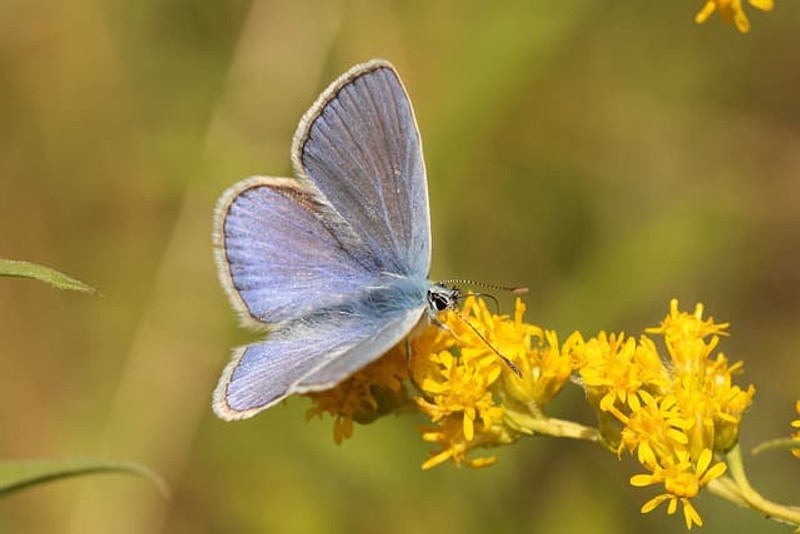
3 Fabulous Free Nature Apps
Published by Anne Altor on Aug 12th 2022
Free Nature Apps for Learning & Exploring!
If you're looking for help identifying plants, birds, fungi & insects, this post is for you! We'll discuss some of the top free nature apps you can use to deepen your knowledge of the life all around you. We're not discussing field guides here, although field guides are key (no pun intended) for learning and identifying species. However, science-based apps provide tools that enhance what's available in field guides. In this post, we'll describe 3 of our favorite nature identification apps. These apps help you learn and contribute to a growing body of knowledge shared by your fellow citizen scientists!
First, why care about identifying species?
Becoming familiar
Learning who's who inspires familiarity, whether it's a plant, mushroom or bird (or another human!). When we recognize another being, they're not anonymous anymore. This can naturally ignite a curiosity to learn more.
Expanding awareness
Once you know the species you're observing, a new world of questions emerges. Where does that bird live in winter? When do they migrate and what's their migration path? What are their habitat needs and challenges? Why does that mushroom grow here, and is it edible? What are the medicinal properties of this plant? What role does this lichen play in the ecosystem? What shelter does this insect need during winter to complete its life cycle? Such questions can lead to further investigation into the natural world, which can be a life-long and life-changing pursuit.
Deepening connection
Learning about the needs of other species helps us make better decisions in daily life. Do you have a lawn? Understanding insect life cycles can inform how you mow or how you deal with leaves in the fall. Understanding the importance of tropical forests to birds might lead you to change your coffee brand! The more you learn about and become familiar with other species, the more opportunities there are for deepening your relationship with the living world around you. For example, what plants can you add to your garden or patio space to help monarchs and other pollinators?
So here we go, on to our favorite free Nature Apps…
iNaturalist
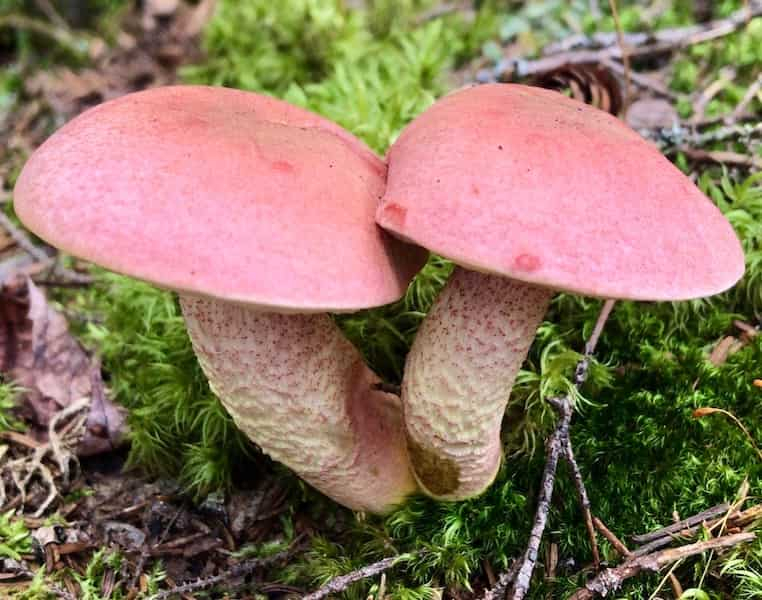
Bolete mushrooms. Photo by Anne Altor
iNaturalist is a joint initiative of the California Academy of Sciences and the National Geographic Society. iNaturalist helps you identify plants, fungi, insects and other taxa from photographs that you take in real time or upload from your photo library. The app matches your pictures to its ever-growing database of known species for a given region. Then it suggests likely matches from species known from your area. You can click on the suggested species for more information and pictures, and if you're confident in the ID you select a species and click "SHARE." Then your sighting is saved to your account and to the iNaturalist database.
Beyond Species Identification
In addition to helping with species ID, iNaturalist provides information on each species it suggests as a match, so you can learn more and differentiate between possible matches. The information given for each suggested species includes a range map of where it's been observed, and Wikipedia entries for ecology, taxonomy and conservation status. A photo library is included so you can see more pictures of the species.
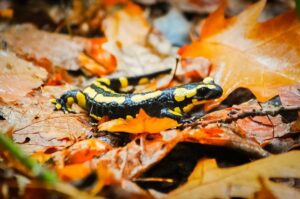
Marbled salamander. By Maxime Thibault from Pixabay
A Global Community
iNaturalist is powered by a global community of citizen scientists who work together to accurately identify observations. After you share an observation in iNaturalist, others can comment and agree or suggest a different ID. You as well can add comments and suggestions to other peoples' observations.
The global pool of species observations made in iNaturalist is a gold mine of information on biodiversity trends. All you have to do to contribute is upload your pictures. It's ok if you can't identify a species – upload your pictures anyway, the community is there to help!
Seek by iNaturalist
Seek by iNaturalist is a good complement to the iNaturalist app. Seek provides a quick way to identify species common to your area simply by scanning a plant etc. with the Seek app's camera on your phone. You can also take or upload a photo from your library for identification.
Personalized Observation Log
If you create an account in Seek, the app keeps a record of all your observations by taxa (plants, amphibians, fungi, fish, reptiles, birds, insects, mammals, arachnids, mollusks). It's like having a personal field guide to all the species you've identified! It's a fun app for kids too. You and your kids can participate in learning challenges hosted by Seek. For example, this month (August 2022), there's a seed-dispersal challenge. The goal is to learn about different kinds of seeds and their adaptations for transportation by wind, water or animals. Seek guides you through the challenge with prompts about what to look for.
How Seek Differs from iNaturalist
The species included in Seek are compiled from photos and identifications made by the global iNaturalist community. That means the Seek camera works best in areas that have an active community of iNaturalist users. Seek also uses data submitted to iNaturalist to show suggestions for "species nearby." Unlike iNaturalist, findings made with Seek are not shared publicly; this makes Seek more child-friendly. iNaturalist requires you to create a free account to use the app. Seek doesn't require an account, but you can create one if you want to save your sightings.
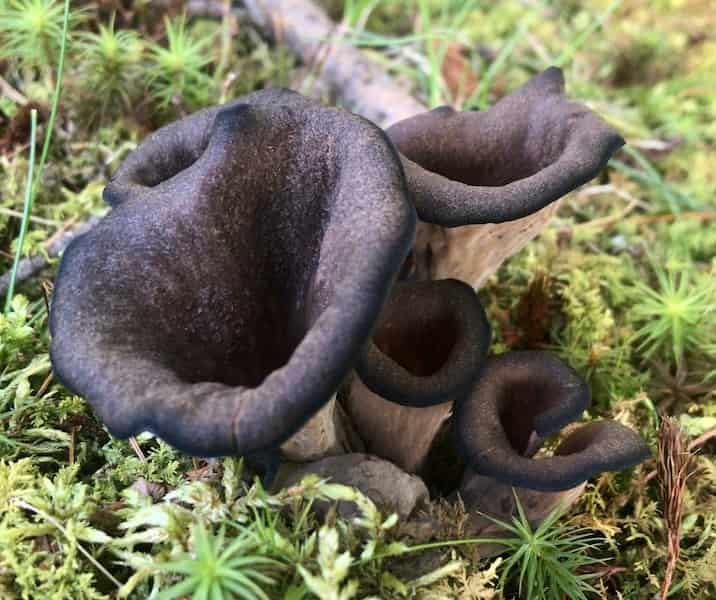
Trumpet mushrooms. Photo by Anne Altor
Merlin Bird ID
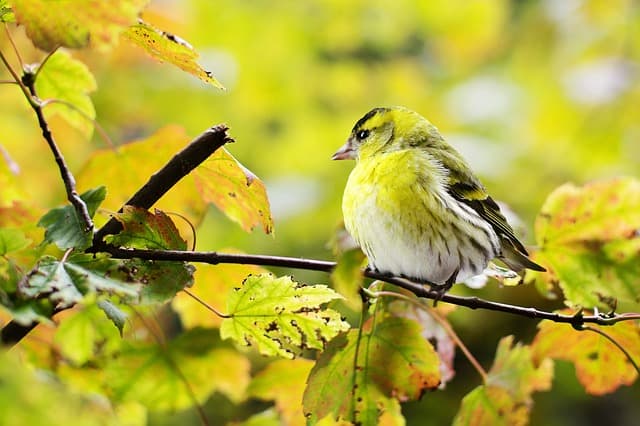 Have you ever heard a bird calling as s/he flitted out of sight among the leaves and treetops? Or gotten a good look at a bird but not been able to figure out the species? Merlin Bird ID from the Cornell Laboratory of Ornithology is our go-to resource for learning bird calls and figuring out who we're seeing and hearing.
Have you ever heard a bird calling as s/he flitted out of sight among the leaves and treetops? Or gotten a good look at a bird but not been able to figure out the species? Merlin Bird ID from the Cornell Laboratory of Ornithology is our go-to resource for learning bird calls and figuring out who we're seeing and hearing.
The Bird ID Wizard
Merlin's Bird ID Wizard helps you identify a species by color, size, habitat and behavior. First, download the bird list for the region you're birding in. The app will only suggest birds found in your area. If you've sighted a bird, you enter the size, color and location details of your sighting. Then Merlin suggests likely or possible species. When you confirm the species, you click "This is My Bird." Merlin then saves your sighting record to its database.
Sound ID
The feature we use the most is the amazing Sound ID feature. Sound ID is developed from the Cornell Lab's extensive database of bird calls. To use Sound ID, you hold your phone up and hit Record, and the app makes a real-time recording of the sounds around you. When a bird calls, the sonogram of the call is recorded and matched to the database. Merlin then suggests the most likely species and brings up the calls of that species so you can listen and verify. This is a brilliant way to learn birds that are otherwise hard to see or identify.
Photo ID
In addition to the Bird ID Wizard and Sound ID, Merlin has a Photo ID feature. To use Photo ID, upload a picture of a bird from your photo library, or take a picture in real time. Merlin will match your image to its database and suggest likely species.
All in all, Merlin Bird ID is an amazing free app that offers great opportunities for learning and contributing your observations to the global pool of bird distribution data.
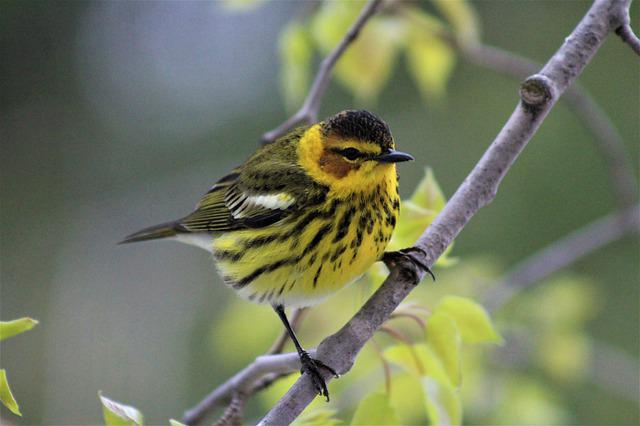
Cape May Warbler. Image by Jennifer Beebe from Pixabay
Happy Exploring!
We hope you enjoyed this post about free nature apps, and hope you're inspired to deepen your explorations of the natural world around you! Of course, there's always the potential for electronic overwhelm. These apps are all easy to pop open and closed as needed, so you don't need to be on your phone other than when you're uploading a picture or scanning the camera or microphone.
Do you have experience with these or other nature apps? What are you learning? What's exciting you? Share your experience in the comments below!
